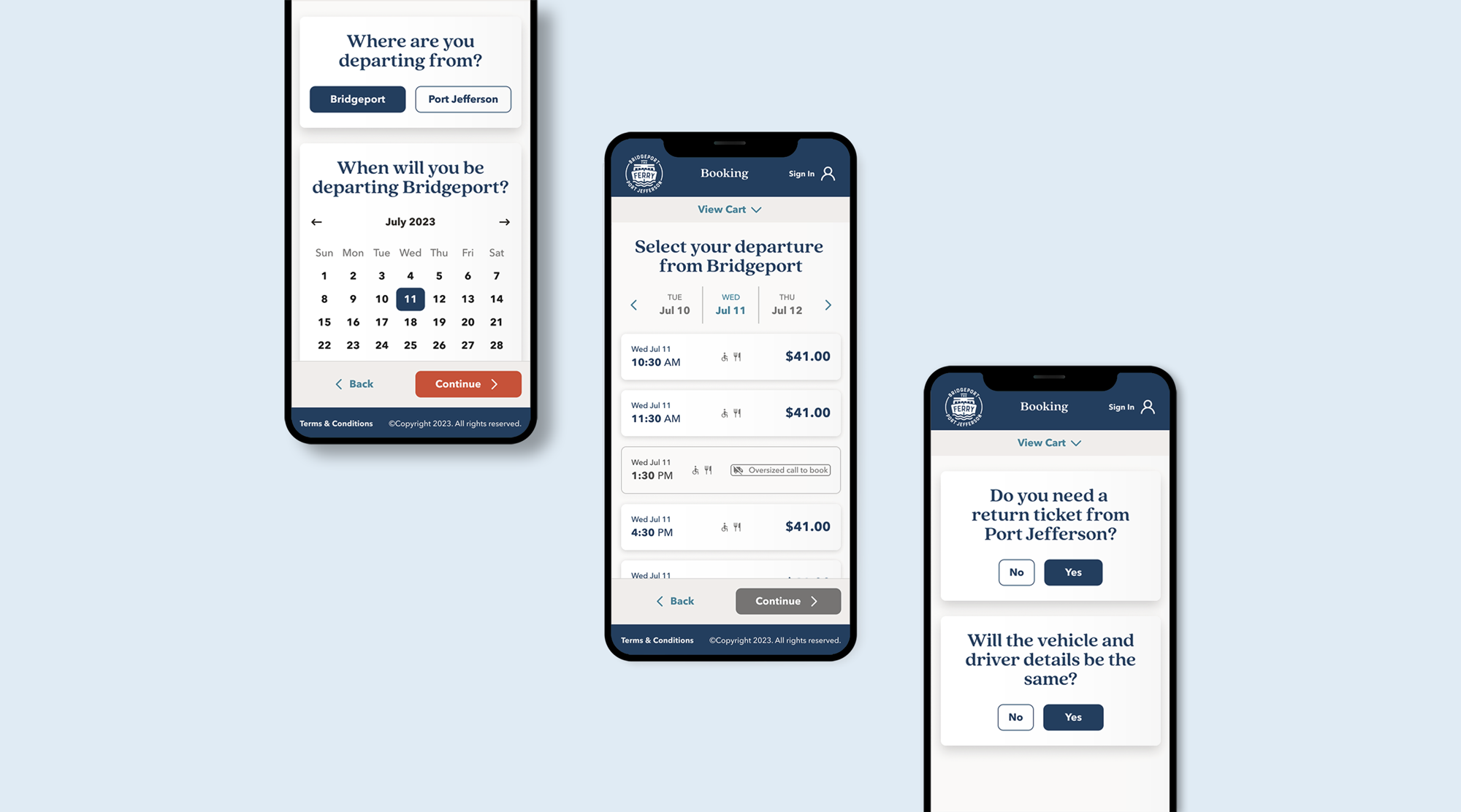Port Jefferson Ferry
Redesigning the Ferry Experience for a Seamless Digital Journey
Client
Year
2023
Industry
Public Transportation
My Role
Senior UX/UI Designer
User Research
Project Overview
The Port Jefferson Ferry’s digital booking system needed a complete modernization to better serve its growing customer base and operational demands. The existing web-based platform presented usability challenges that made purchasing tickets inefficient and frustrating to passengers, creating unnecessary friction in the booking process. Our goal was to redesign the ferry booking flow to be seamless, intuitive, and mobile-friendly, allowing passengers to easily plan their trips, purchase tickets, and access ferry services with minimal effort.
To ensure the redesign aligned with passenger needs and business goals, we conducted user research with existing customer groups and stakeholder interviews with the internal ferry team (office and dock workers) to identify key pain points in navigation, information clarity, and transaction flows. One of the main issues we identified was that most of the current users were not adapted to technology nor comfortable with the idea of making a purchase online. Insights from this research shaped a user-first strategy, focusing on simplifying booking steps, improving wayfinding, and enhancing accessibility for a tech-averse user base.
See full UX Strategy Deck
Booking Flow Mapping
Design Process
As Senior Strategic UX Designer, I worked closely with the Design Director and our development team to conduct user research, wireframing, prototyping, and design execution of the mobile booking flow system. Research revealed that most passengers were tech-averse and often preferred speaking to an agent or purchasing tickets in person. In addition, the complexity of ferry bookings—requiring inputs for vehicle size, attachments, cargo types, and passenger details—added to user confusion. Our goal was to simplify the digital booking process by guiding users through clear language and intuitive questions, mimicking an in-person agent's assistance.
To address these challenges, we redesigned the flow to present only relevant options at each step. Instead of overwhelming users with dense forms, we asked straightforward questions like “Are you traveling with a vehicle?” or “Do you have oversized cargo?” to surface necessary fields dynamically. Navigation was restructured to highlight essential tasks, allowing users to quickly find schedules, select the correct ticket type, and complete purchases with minimal friction. We implemented progressive disclosure to simplify decision-making, surfacing additional fields only when needed, and automated fare calculations based on user selections to reduce errors.
For mobile usability, we designed a touch-friendly interface with larger tap targets, clear hierarchy, and step-by-step guidance, ensuring accessibility across all devices. The result was a streamlined, user-friendly booking experience that reduced frustration, improved efficiency, and empowered non-tech-savvy passengers to confidently complete their reservations online.
New Booking Flow
Outcome & Insights
Although the redesigned booking system was not implemented due to budget constraints, the research and design work provided valuable insights into the needs of ferry passengers and the challenges of digital transformation in transportation services. Our work uncovered key usability barriers, particularly for tech-averse users who preferred in-person assistance but needed a seamless online alternative. This project also reinforced the importance of early alignment between business objectives and technical feasibility. While the final product was not launched, the design solutions and research findings remain a scalable foundation for future improvements to ferry booking systems. The work emphasized that investing in accessibility, structured decision-making, and mobile-first design is critical for modernizing transportation services, ensuring that digital experiences align with real-world user expectations.






